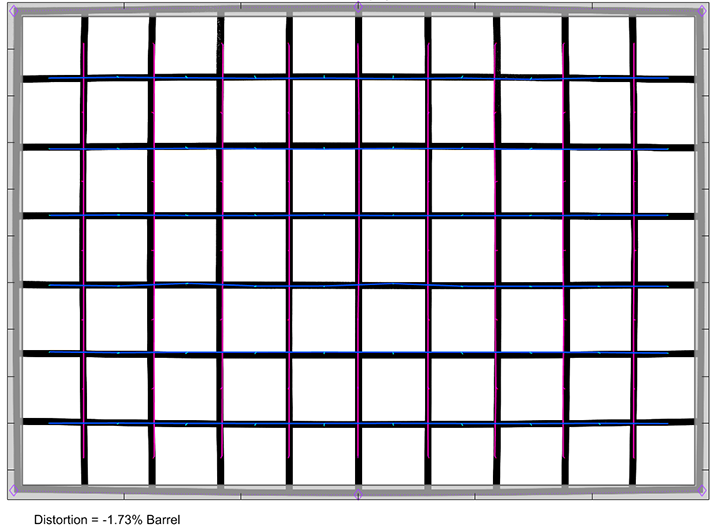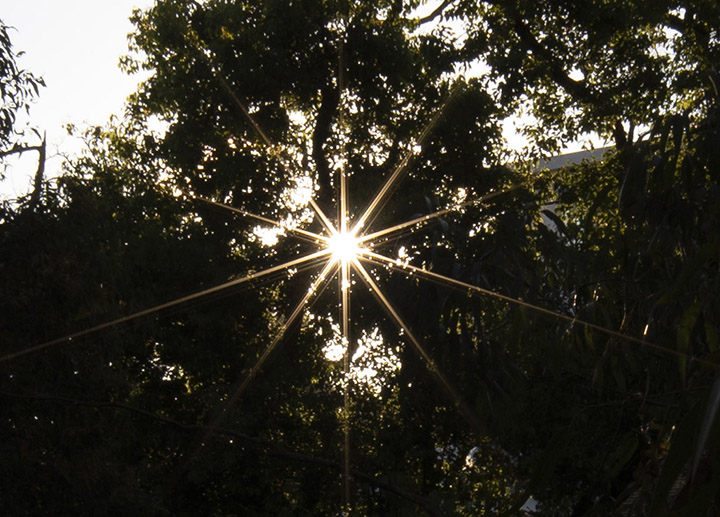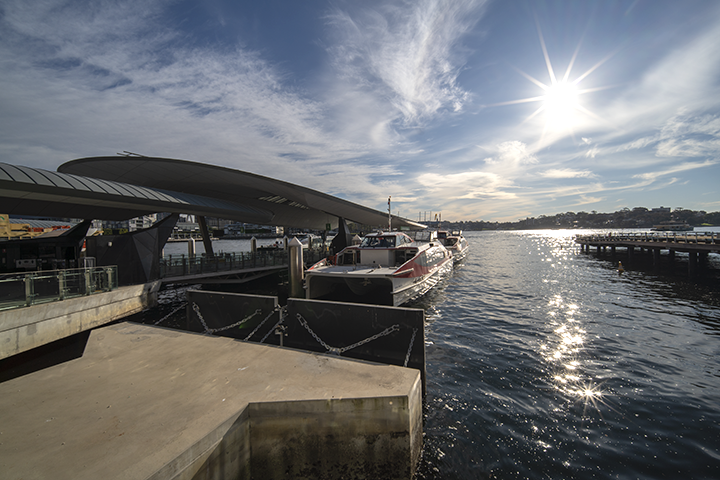|
Laowa 14mm f/4 FF RL Zero-D - Review / Test Report - Analysis |
|
Lens Reviews -
Sony Alpha (Full Format)
|
|
Page 2 of 3

Distortion
Ultra-wide angle lenses tend to produce a certain degree of barrel distortion. While we can't really confirm the classified Zero-D(istortions), the Laowa 14mm f/4 FF RL Zero-D is quite well corrected in this respect - which is also needed because image auto-correction isn't supported. A barrel distortion of ~1.7% can be visible in certain scenes but it shouldn't be a dealbreaker really.

Vignetting
The amount of vignetting increases the wider you push your design and the Laowa 14mm f/4 FF RL Zero-D is no exception to the rule. A light falloff of ~2.9EV (f-stops) is clearly visible at f/4 and stopping down results only in a fairly moderate improvement. The vignetting doesn't get any better than ~1.8EV at f/8 and beyond. In the grand scheme of this, this is quite normal for such a lens but keep in mind that auto-correction can't help you here. However, if needed manual vignetting compensation isn't all that difficult in your favorite RAW converter.

MTF (resolution)
The resolution characteristic of the Laowa lens is generally good. The image center is very sharp straight at f/4 and the border quality is more than decent. The corners are a bit softer but still pretty good. Stopping down to f/5.6 improves the quality across the image field and even the corners make it across our "very good" mark here. Beyond f/8 diffraction is a limiting factor although f/11 remains very usable.
While this sounds quite positive, there are some caveats though. At shorter focus distances, the field curvature is very pronounced. To be fair here - usually, that's rather irrelevant. How many flat field images at short focus distances have you taken in your life? A more severe issue was an optical alignment problem in our sample which showed up as a zone of softness in the lower-left mid-field. Hopefully, Laowa will be able to provide more consistency in current production batches to avoid such alignment issues.
Please note that the MTF results are not directly comparable across the different systems!
Below is a simplified summary of the formal findings. The chart shows line widths per picture height (LW/PH) which can be taken as a measure for sharpness.
If you want to know more about the MTF50 figures you may check out the corresponding Imatest Explanations

Chromatic Aberrations (CAs)
Lateral CAs are well controlled with an average CA pixel width of ~0.8px at the image border and f/4. Stopping down improves this marginally.

Sunstars & Flare
"Sunstars" seem to be a quite popular topic in the community lately. Sunstars are an aperture effect. If a lens has an uneven number of aperture blades - like 5 in the case of the Laowa 14mm f/4 - you will get 10 rays. If a lens has an even number of aperture blades, the number of rays is the same (6 blades = 6 rays). And finally, if you have curved aperture blades, you get less defined sun stars. For best results, you should stop down to at least f/11, better f/16 (the Laowa only supports f/11 and f/22).
So as you can see below the Laowa 14mm f/4 does a very nice job with very defined and long rays which is preferred by most (as opposed to mushy & short rays)
 Of course, it doesn't have to be the sun producing the sun stars. Sunstars can also show up in reflections (see also the water surface below) and artificial light sources.
Another aspect that you can observe below is flare behavior. If you look very closely, you may spot ghosting but it's not much really. Of course, you can always produce worse reflections if you push it but then why do you want that anyway.
Of course, it doesn't have to be the sun producing the sun stars. Sunstars can also show up in reflections (see also the water surface below) and artificial light sources.
Another aspect that you can observe below is flare behavior. If you look very closely, you may spot ghosting but it's not much really. Of course, you can always produce worse reflections if you push it but then why do you want that anyway.

|